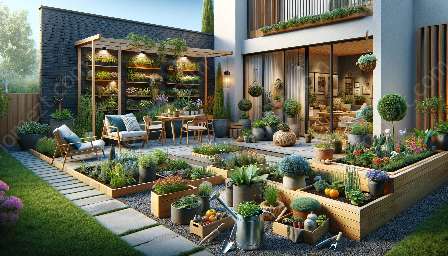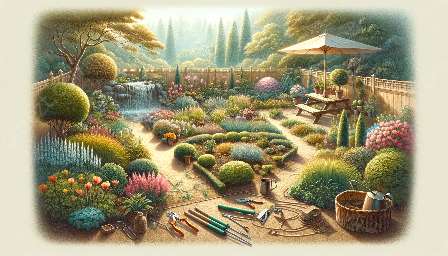Plant spacing is a crucial aspect of gardening that significantly influences the growth, health, and visual appeal of your plants. The arrangement and placement of plants can have a profound impact on the overall design of your yard and patio, as well as the success of your planting techniques. In this comprehensive guide, we will explore the significance of plant spacing, how it relates to planting techniques, and its influence on yard and patio landscaping.
The Importance of Plant Spacing
Proper plant spacing is essential for ensuring that each plant has enough room to grow and thrive. Inadequate spacing can lead to overcrowding, competition for resources, and increased susceptibility to diseases and pests. On the other hand, excessive spacing can result in a sparse and unattractive garden.
Furthermore, plant spacing plays a crucial role in maximizing air circulation and sunlight exposure, which are vital factors for the health and vigor of plants. By allowing adequate space between plants, you can facilitate better airflow and light penetration, reducing the risk of fungal diseases and promoting optimal photosynthesis.
Relationship with Planting Techniques
Plant spacing directly influences various planting techniques, such as companion planting, intercropping, and square foot gardening. Understanding the requirements of different plants and their compatibility with one another is essential for effective planting. Additionally, proper spacing is crucial for implementing techniques like succession planting and crop rotation, which can help maximize yields and maintain soil fertility.
Moreover, accurate plant spacing allows for efficient irrigation and fertilization, ensuring that each plant receives the necessary nutrients and water without depriving or over-saturating neighboring plants. This attention to detail is fundamental to successful planting techniques and promoting a healthy, thriving garden.
Enhancing Yard & Patio Design
When it comes to yard and patio design, plant spacing plays a pivotal role in creating visually appealing landscapes. Strategic placement of plants based on their growth habits, colors, and textures can elevate the aesthetic appeal of outdoor spaces. Moreover, well-planned plant spacing contributes to the overall balance and harmony of the landscape design.
By incorporating appropriate plant spacing, you can create distinct zones within your yard and patio, such as intimate seating areas, vibrant flower beds, and lush greenery. This integration of plant spacing with yard and patio design enables you to define spaces, establish focal points, and enhance the overall functionality and beauty of your outdoor environment.
Conclusion
In conclusion, understanding the significance of plant spacing is key to successful gardening, effective planting techniques, and captivating yard and patio design. By embracing the principles of proper plant spacing, gardeners can nurture healthy and vibrant plants while enhancing the visual appeal and functionality of outdoor spaces. Whether you are a novice gardener or an experienced horticulturist, mastering the art of plant spacing will undoubtedly elevate the beauty and sustainability of your garden.




